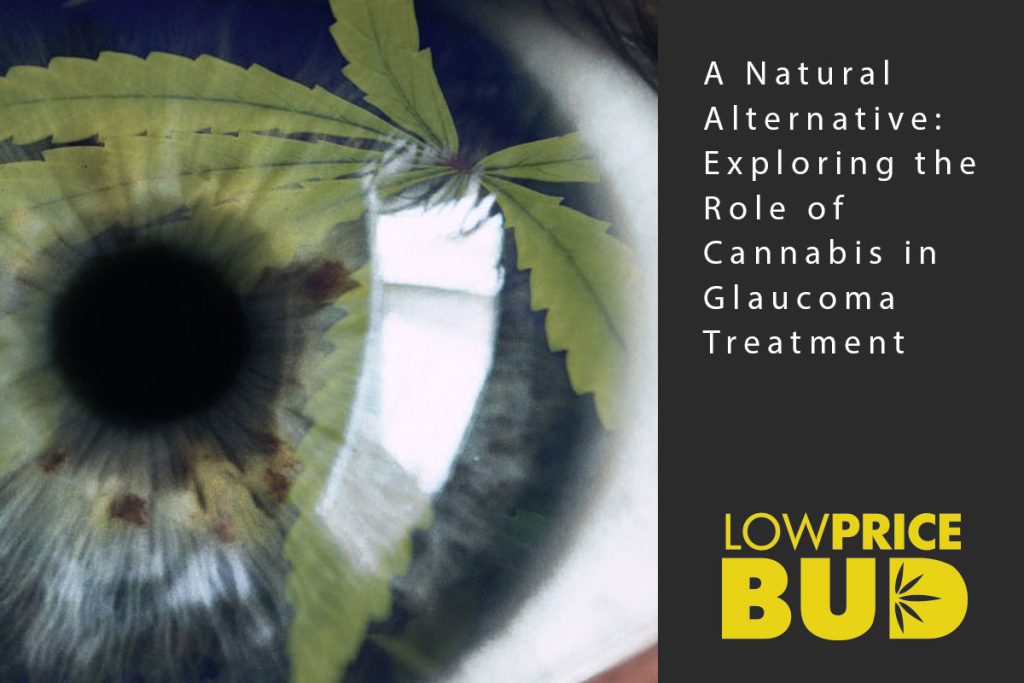Join us as we explore the captivating realm of medical research surrounding the potential therapeutic benefits of cannabis. Despite its historical association with recreational use, cannabis has occasionally been overlooked as a viable treatment for diverse health conditions. However, recent studies have sparked interest in its potential as a natural alternative in ophthalmology, particularly for glaucoma treatment. Let’s uncover the benefits of cannabis for glaucoma together.
What is cannabis and how does it work?
Cannabis, also known as marijuana, contains cannabinoids like THC and CBD. THC causes the “high” effect, while CBD offers potential therapeutic benefits. In glaucoma treatment, cannabis interacts with the body’s endocannabinoid system (ECS), a network of receptors regulating physiological processes, including intraocular pressure. By binding to ECS receptors, especially CB1 receptors in the eye, cannabis can reduce intraocular pressure, potentially benefiting glaucoma patients.
The benefits of cannabis for glaucoma
Cannabis holds promising potential benefits for glaucoma in various ways. One significant advantage is its ability to effectively lower intraocular pressure, a key risk factor for the condition. Numerous studies have demonstrated how cannabinoids can reduce intraocular pressure in both animal models and human subjects. Moreover, cannabis showcases neuroprotective properties in glaucoma, offering protection to the optic nerve and slowing the disease’s progression. This is particularly vital in cases where traditional treatments have proven ineffective in controlling intraocular pressure adequately.
Beyond lowering intraocular pressure and providing neuroprotection, cannabis has shown promise in easing common glaucoma symptoms like eye pain and nausea. The analgesic properties of cannabinoids help alleviate discomfort, while their antiemetic effects reduce nausea and vomiting. Consequently, these benefits contribute to an overall enhancement in the quality of life for glaucoma patients. As research continues, the multi-faceted advantages of cannabis in glaucoma treatment are garnering increased attention and potential therapeutic applications.
Different forms of cannabis for glaucoma treatment
There are several forms of cannabis that can be used for glaucoma treatment, each with its own advantages and considerations. Some of the different forms include:
- Smoking or Inhalation: Inhaling cannabis through smoking or vaporization provides rapid relief as cannabinoids quickly enter the bloodstream. However, smoking may not be the most preferred method for glaucoma patients due to potential irritation to the eyes and respiratory system.
- Edibles: Cannabis-infused edibles, such as gummies or brownies, offer a discreet and convenient way to consume cannabis. They have a delayed onset of effects, which can be advantageous for patients who want longer-lasting relief.
- Tinctures: Cannabis tinctures are liquid extracts that can be administered sublingually (under the tongue) for fast absorption. They provide precise dosing and are suitable for patients who prefer not to smoke.
- Topicals: Cannabis-infused creams, lotions, or balms can be applied directly to the skin around the eye area to potentially target localized symptoms like eye pain or inflammation.
- Capsules: Cannabis capsules provide a consistent and measured dose, making them an efficient option for glaucoma patients seeking precise dosing.
- Eye Drops: Some research explores the development of cannabis-derived eye drops specifically for glaucoma treatment. However, as of now, these products are still in the experimental stages and not widely available.
How to use cannabis safely and effectively for glaucoma
Prioritizing safety and effectiveness is essential when contemplating cannabis as a treatment for glaucoma. Here are some guidelines to ensure its safe and effective utilization:
- Consult with a healthcare professional: Before incorporating cannabis into your glaucoma treatment plan, consult with a healthcare professional who is knowledgeable about cannabis therapeutics. They can provide guidance on dosage, potential interactions with other medications, and any potential risks or side effects.
- Start with low doses: Begin with low doses of cannabis and gradually increase as needed. This allows you to gauge your body’s response and minimize the risk of adverse effects. It is important to find the right balance between therapeutic benefits and potential side effects.
- Choose a reputable source: Obtain cannabis products from a reputable source that adheres to quality and safety standards. This ensures that you are getting a consistent and reliable product that is free from contaminants.
- Monitor your symptoms: Regularly monitor your symptoms and intraocular pressure levels to assess the effectiveness of cannabis as a treatment. Keep a record of any changes or improvements, and discuss them with your healthcare professional.
Conclusion
As research continues to explore the potential therapeutic benefits of cannabis, its role in glaucoma treatment is gaining attention. With its ability to lower intraocular pressure and provide neuroprotective effects, cannabis offers a natural alternative for managing this sight-threatening condition. By working with healthcare professionals and following safety guidelines, glaucoma patients can explore the potential benefits of cannabis as a natural alternative in their treatment journey. Visit Lowpricebud.co online dispensary for all your cannabis needs.
Build Your Own Oz 8 x 3.5g
$140.00Build Your Own Oz 4 x 7g
$140.00Build Your Own (AAA) Half Pound
$550.00Build Your Own (AAA) Pound 16 x 28g
$1,050.00Build Your Own (AAA) Pound 4 x 112g
$1,050.00









